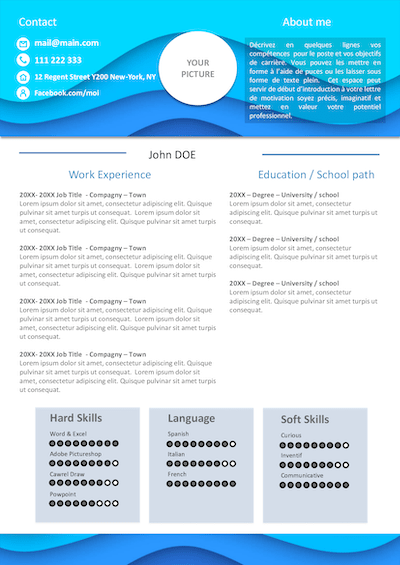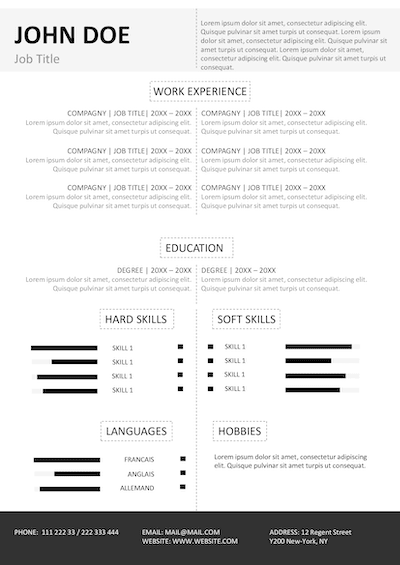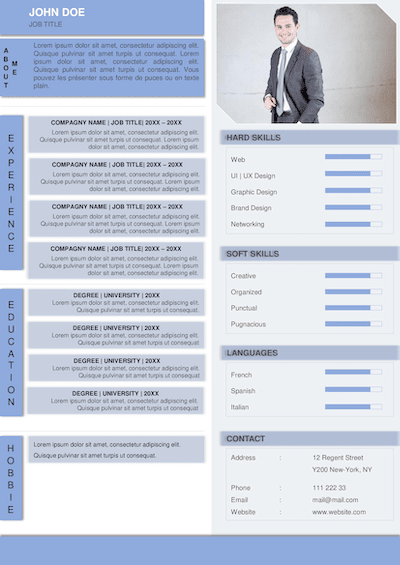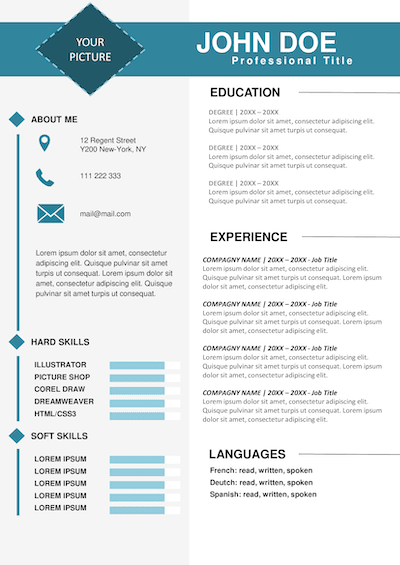How to Write A Resume ?
Based on your experiences and skills, the resume reveals your personality, it's your passport to get a job. It is necessary to make it readable, accessible and attractive. Your resume will be read in two or three minutes, it must first attract attention and arouse interest. In summary, your resume is like a sales brochure, it must respect the rules of presentation and formatting. Remember that your resume is your passport, it looks like you and your professional image. Take time to heal its presentation and content. In this article we will give you all the advice necessary to achieve a winning resume.
How to prepare a first-class resume
About you
Whether you are a young graduate or already have a long career behind you, if you are looking for a job, you must be ready to do a complete review of your resume and this, for almost every job you will be applying for. The formal contents may not change but the way you present your professional background necessarily will. Bear in mind that there are many candidates for a limited number of jobs and that you are not the only one who seems to fit the job description. Moreover, it is not the best candidate that is selected for an interview, but the best resume.
The purpose of the resume is to present your professional and educational background, as well as your credentials, in their most favorable light. But don’t forget that the primary objective is to get an interview which is why your resume must not only give a faithful description of yourself but also stick out of the bunch in some way. It is important to be concise, clear, and original in the way you chose to evoke your past achievements. Just being up for the job may not be enough, so do not hesitate to show any creative skills you might have. Do not be superficial, colors are not useful for example, but rather try to use your imagination in the organization and general layout of the resume.
About them
You have just read an ad that tickled your curiosity and struck you as a great opportunity. Before you even think about applying, you should do some quick research on the firm, its environment, its employees, and its different fields. This first step is of the utmost importance. The more you know about the people that are hiring you, the more likely you will be to appeal to them. Not to mention that you do not want to show up for the interview and realize that you have imagined a perfectly matched dream job that actually really does not fit you at all. You might not even want this job. Think it over and make a reasonable decision because you do not want to lose precious time on a job that you do not really want. Besides, if you do not really want it, then it probably does not suit you and this will probably show sooner or later whether in your resume or during the interview. If, after thought, the job does seem to meet your expectations, then, before you actually start writing your resume, you should investigate exactly what kind of candidate the firm is looking for. If the job description provided is not clear enough, do not hesitate to phone the prospective employer for more details. If you intend to change fields or positions, be sure you know what type of job you are aiming at and make sure that you are qualified for it.
Resume format
There are different ways of organizing your resume depending on the length of your career, its specificity, technicity, etc. Think about what your best assets are for the job and put them forward so that they will be easy to spot. For instance, if you have no relevant professional experience in the field of renewable energies but you are applying for a job in that area, enhance the fact that your major in university included a course on that particular subject. In that case, start with a paragraph on “Education”. If, on the contrary, if you have acquired particular knowledge on renewable energies throughout your professional career, you should emphasize that experience and therefore put your “Experience” paragraph at the head of the page. No matter how long and eventful your professional background has been, never exceed one page. This shows efficiency and understanding of recruitment procedures.
This being said, there are two main layouts possible for a traditional resume: the chronological resume and the functional resume.
Chronological Resume
The chronological resume is the most common; showing in reverse chronological order your experience and education. It is better to start with the Experience section and then Education. However, if you have very little experience, it is better to do it the other way around in order to start with something consistent.
List your experience using the same layout each time starting with either your position or the name of the firm (whichever is the most impressive), then the name of the firm or position, then the location (if relevant) and dates.
Functional Resume
The functional resume is less common, it is based on your skills in defined areas. It will be organized into categories such as: “managing”, “editing”, and “communication”. In each category, give a brief description of the tasks you have accomplished. Then at the bottom of the section, recap the different positions occupied followed by the formal information (job title, name of employer, location, dates).
The contents of a resume
The resume must convince the recruiter to meet you and to do so it must be both very thorough (do not omit any of the formal information) and appealing (show creativity). Let’s review the contents of each section making up a resume.
Formal Information
This is not really a section as such. You can either spread elements of information along the whole paper or use them as headlines or bottom lines. They have to figure somewhere but that does not mean you should draw particular attention to them. Use small print and italics if needed. The only element that should stand out is your name. Here are the standard features that will necessarily appear in your resume: full name, address (including country if not the USA), phone number(s), e-mail, website (only if relevant professionally). Gender, date of birth, ethnicity as well as photographs should be left out for they are potentially discriminating.
Experience
Can also be titled “Professional Experience” or “Professional Background”. Once again, you do not have to recount of all your professional experiences, select only those that are meaningful to this particular case. Use reverse chronological format. The best way to relate your past experience is by using verbs in the past tense. Do not use nouns such as “responsible for the marketing study”; this will give an impression of inactiveness. Prefer something like “conducted the marketing study” which is more dynamic and also more precise. (Check for power verbs in the last section of the page).
Education
Can also be titled “Education and Training”. List your academic achievements in reverse chronological order. List the degree and major first, followed by the date the degree was received or expected date, then the name of the university. No need to specify your grade point averages, a brief recap of the theoretical contents of your degrees will suffice. Indicate whether it was a graduate or a post graduate degree course, where it took place and include any special awards or honors.
Optional paragraphs
Even though you are eager to show your personality to a potential recruiter, you must use extra care when revealing any personal information. These are some sections you may include at the end of your resume but it is left to your best judgement to evaluate whether they are relevant to getting hired or not.
Computer Skills
If the job requires particular knowledge about specific software, you can add a paragraph detailing those skills.
Community Leadership
Can also be titled “Professional and Community Leadership”. Your activity as the head of an organization or association can be very helpful if you are applying for a position requiring leadership qualities. However, do not express any personal beliefs either religious or political.
Personal Interests
Can also be titled “Interests and hobbies” or just “Interests”. Memberships, language/technical skills. Your hobbies can be mentioned if they are socially valued: sports, reading, art, travel... No one will care what your favorite TV show is.
More guidelines on how to write a resume
Your new customized resume will have to impress the reader. Once you have provided all the formal information and you have defined the contents, try to add a special touch.
Use Power verbs
Here is an incomplete list of verbs that will give the impression of a strong personality and help emphasize your accomplishments:
Achieved, advised, analyzed, budgeted, charted, completed, conducted, constructed, consulted, coordinated, counseled, designated, designed, developed, diagnosed, directed, established, expanded, founded, guided, headed, implemented, initiated, instructed, led, lobbied, managed, negotiated, operated, organized, performed, planned, presided, processed, produced, programmed, promoted, reduced, referred, regulated, replaced, represented, reviewed, scheduled, solved, supervised, systematized, tested, trained, updated, won.
Script
Times New Roman, Courier, Helvetica, New Century, Palatino or Arial are the most common scripts. Not that you should not be original, but keep in mind legibility and compatibility between computer programmes and versions. Choose a script size of between10 and 14.
Proofread
Ask someone competent to read your resume and correct your typing, spelling and grammatical mistakes.
References
Do not include references unless you were referred to the recruiter for the job by someone of importance. Otherwise, you can mention that “References are available upon request”.



